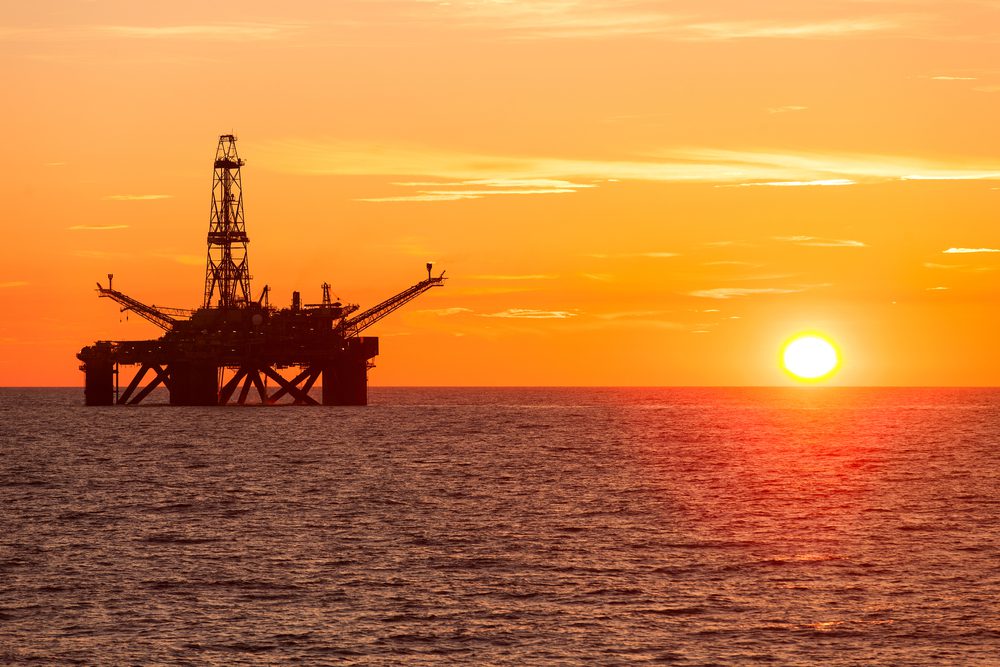Photo: Lukasz Z / Shutterstock
By Rachel Adams-Heard and Simon Casey (Bloomberg) –Apache Corp. tumbled after the company’s update on a closely watched exploratory oil well off the coast of Suriname offered little indication as to whether it will be commercially viable.
Tests were carried out on the Maka-1 well after it reached a depth of about 6,200 meters (20,300 feet), the Houston-based company said Monday. After those tests are completed, the company will resume drilling in mid-December “to evaluate a third play type” at a new target depth of about 6,900 meters.
But going for a third zone could indicate that the first two were unsuccessful, said Leo Mariani, an analyst at KeyBanc Capital Markets. “There’s no color,” he said of the update. “Typically we’d have something like, ‘We found oil’ or ‘We found gas.’ It was just incredibly thin.”
Apache shares and bonds slumped on the news. The stock was down 13% to $19.42 at 2:38 p.m. in New York, after earlier hitting $18.93, the lowest since 2001. The company’s 2028 bonds fell as much as 4.1% to 98.95 cents on the dollar, the biggest drop on record.
Apache’s Suriname exploration is adjacent to an Exxon Mobil Corp. discovery that’s one of the world’s biggest finds in years, but investors have been anxious about the viability of the project ever since the company’s high-profile geologist unexpectedly resigned in October. That sank Apache shares and bonds, though they later recovered after Chief Executive Officer John Christmann said on a conference call that the company hadn’t “seen anything that would be unexpected” from its exploratory well.
Still, some analysts have been skeptical. In October, Morgan Stanley’s Devin McDermott put the odds that Maka-1 will show no commercial oil resource or a low gas discovery at 80%.
‘A Bit Unusual’
“If there had been commercial hydrocarbons — oil and gas — detected with the initial well, we would have gotten that update from the company along with this release and there wouldn’t be any need to drill deeper,” McDermott said by phone Monday. “The change of course and change of plan this far into the well drilling process — it’s a bit unusual.”
The next update on the Maka-1 well may not come until January, Mizuho’s Paul Sankey said in a note to clients. “This is hardly the champagne cork moment that was potentially at play here,” he said, “but then again nor is this firmly a dry hole.”
Unlike most offshore exploration ventures, Apache holds 100% of the working interest on Block 58 offshore Suriname, where the Maka-1 well is being drilled. Hess Corp., for example, has just a 30% interest in the Stabroek Block offshore Guyana. That leaves Apache and its shareholders more exposed to the long-awaited results.
Maka-1 is “among the most anticipated wells in the world,” analysts at Tudor, Pickering, Holt & Co. said in a note Monday. “While we appreciate the desire to test multiple play concepts given promotion of the vast potential of this block, releasing the first update without any color on the results of the first two tests will not be taken well by the market.”
© 2019 Bloomberg L.P
Unlock Exclusive Insights Today!
Join the gCaptain Club for curated content, insider opinions, and vibrant community discussions.

 Join The Club
Join The Club







![A screengrab of a map showing an earthquake Mindanao, Philippines on Dec 2, 2023. (Image: US Geological Survey [USGS])](https://gcaptain.com/wp-content/uploads/2023/12/Screenshot-2023-12-02-at-10.45.17-AM-copy.png.webp)





